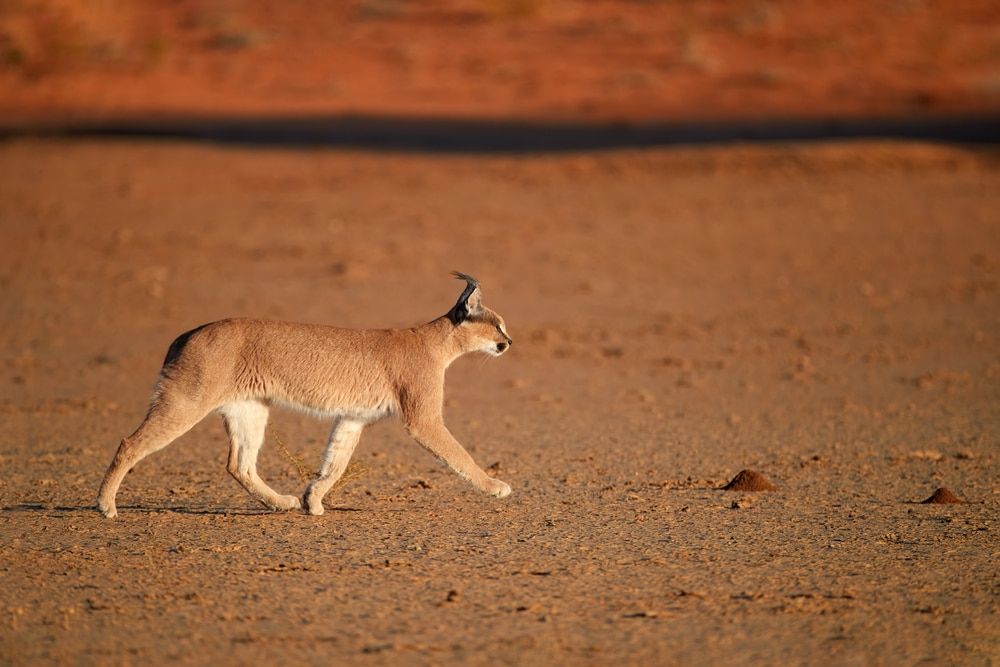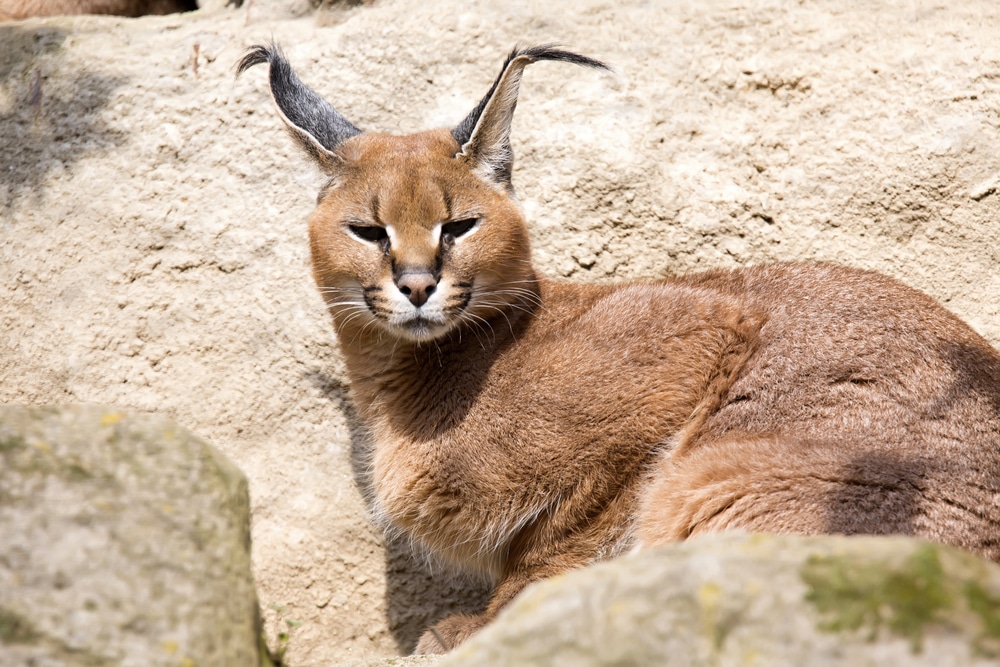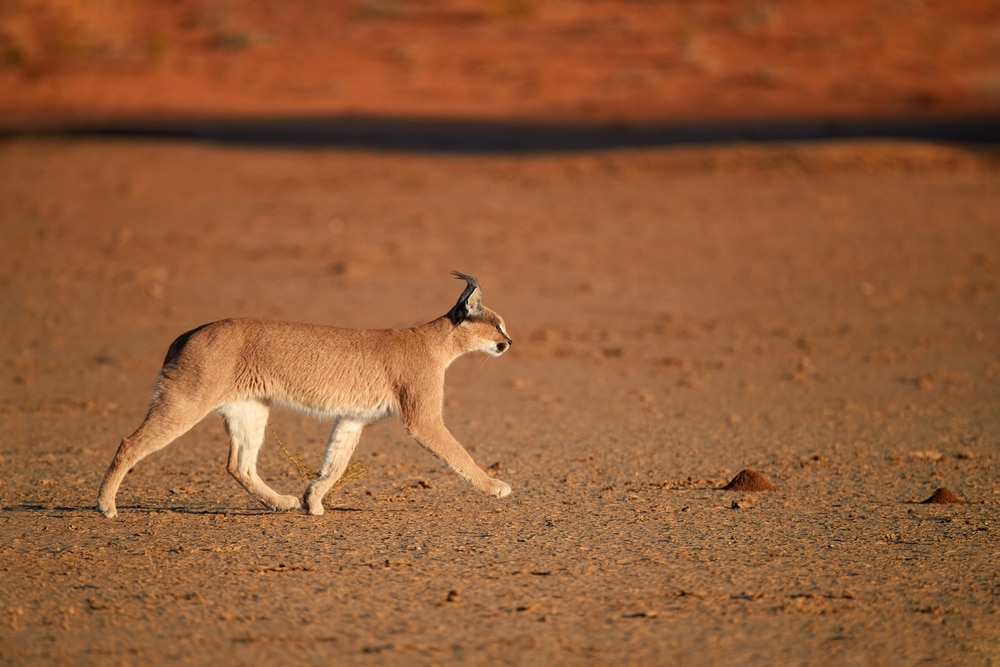
Sand cat: everything you need to know about the desert cat
Table of Contents

Under the scorching sun of the desert regions of Africa and the Orient, hides a small mammal that is as cute as it is resistant. The only cat capable of living in such areas, the sand cat, also known as the desert cat or Margueritte’s cat, is quite rare.
This wild cat looks like a big kitten. But don’t be fooled! It is perfectly adapted to its rather hostile environment, in which few animals can survive.
How can this wild cat find food and water under a blazing sun? What are its lifestyle habits and particularities? What are its main predators?
Meet this exceptional little cat, with a very different physique from its European cousin.
The smallest feline in the desert

Of all the cats that exist in the world, the sand cat is one of the smallest. With a maximum height of 55 cm and an average weight of 3.5 kg, it is closer to the kitten than to the Maine Coon.
Its body is round, its legs quite short and its head a little wider and slightly flattened. Its coat is long and thick. Its fur is sand-colored, ideal for camouflaging!
Although it can live to about 13 years, it must survive its first month of existence. Indeed, females quickly abandon their offspring, kittens who manage on their own are rare.
Where can you see the sand cat?
Its preferred habitat is found in the sandy and more or less rocky regions of the planet. It also appreciates rocky and even mountainous areas.
A very dry climate suits it perfectly.
This little ball of fur is solitary. It roams its territory, which can extend up to 16 km2. But during the mating season, it knows how to get closer to its fellow creatures!
What does it eat?
Generally speaking, the sand cat will eat everything it finds. Although it loves rodents, such as gerbils, it knows how to make do with insects, lizards, and sometimes even snakes.
To kill a reptile, he has a very personal technique: he knocks out the snake with a blow of his paw, before finishing it off with a blow of his teeth in the neck.
This feline hunts at dusk. It can travel up to 5 km to find its food.
Although it is small, its ears are still between 5 and 7 cm long. Thanks to them, it has an extremely developed hearing, allowing it to flush out prey in the sand. Practical, for hunting at night!
When it is full, it buries its prey in the sand so that it can be tasted a little later.
Its physical particularities
To live in such an environment, the sand cat has a rather impressive ability to adapt to different temperatures.
Luckily, the sand cat doesn’t need to drink a lot of it. When he tastes his hunting catches, the water contained in their bodies is enough. In addition, it is able to hold its urine until it finds water. This prevents him from dehydration which would be fatal.
As for its pads, they are covered with hair to protect them from the burning ground. These hairy tufts also give it a better grip.
A hunter hunted

In the food chain, every animal has its predator. And if the sand cat knows how to camouflage itself, it is still a prey for venomous snakes, jackals and some large birds.
Unfortunately, like many other species, one of its main predators remains humans. Although its hunting is prohibited in many countries, it is still tolerated in others. It has become one of the products of the fur trade, due to the exceptional softness of its coat, and is the victim of poachers.
Because it is cute and it remains small, this wild cat also makes some unscrupulous people fall for them who want to make it their pet.
In addition, its living space is shrinking as roads and fences emerge from the ground.
Although it has not been an endangered species since 2016, the situation of the sand cat remains worrying. Today, it is difficult to know the exact number of these felines on the planet.
Among the attempts of some zoos to save this species, few have been conclusive. Indeed, the sand cat’s respiratory tract is fragile, which makes it particularly vulnerable in a place that is too humid. Fortunately, about twenty establishments in Europe have been able to recreate the ideal conditions for the survival of a few families of desert cats! He can thus be admired legally, in the most total respect of his way of life!



Thanks for shening. I read many of your blog posts, cool, your blog is very good. https://www.binance.com/sv/join?ref=PORL8W0Z
Your article helped me a lot, is there any more related content? Thanks!